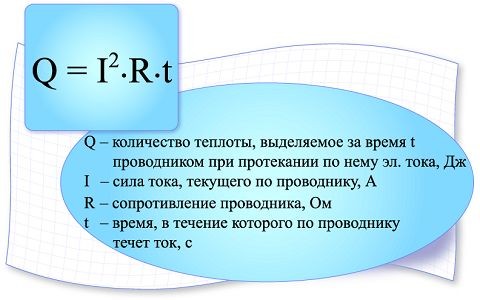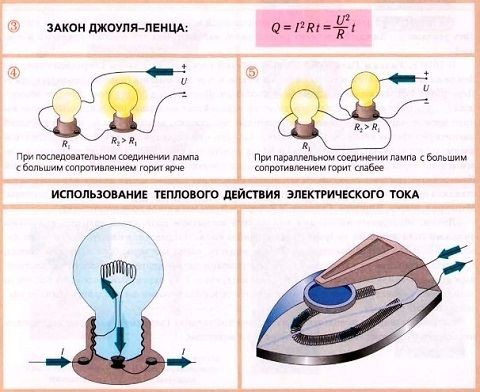The famous Russian physicist Lenz and the English physicist Joule, conducting experiments on the study of the thermal effects of electric current, independently derived the Joule-Lenz law. This law reflects the relationship between the amount of heat released in the conductor and the electric current passing through this conductor for a certain period of time.
Properties of electric current
When an electric current passes through a metal conductor, its electrons constantly collide with various foreign particles. These can be ordinary neutral molecules or molecules that have lost electrons. An electron in the process of movement can split off one more electron from a neutral molecule. As a result, its kinetic energy is lost, and instead of a molecule, a positive ion is formed. In other cases, the electron, on the contrary, combine with a positive ion and form a neutral molecule.
In the process of collisions of electrons and molecules, energy is consumed, which later turns into heat. The expenditure of a certain amount of energy is associated with all movements during which one has to overcome resistance. At this time, the work expended on overcoming frictional resistance is converted into thermal energy.
Joule Lenz's law formula and definition
According to the Lenz Joule law, an electric current passing through a conductor is accompanied by an amount of heat that is directly proportional to the square of the current and the resistance, as well as the time it takes for this current to flow through the conductor.

In the form of a formula, the Joule-Lenz law is expressed as follows: Q \u003d I 2 Rt, in which Q displays the amount of heat released, I - , R is the resistance of the conductor, t is the period of time. The value of "k" is the thermal equivalent of work and is used in cases where the amount of heat is measured in calories, current - , resistance - in ohms, and time - in seconds. The numerical value of k is 0.24, which corresponds to a current of 1 ampere, which, with a conductor resistance of 1 ohm, releases an amount of heat equal to 0.24 kcal for 1 second. Therefore, to calculate the amount of released heat in calories, the formula Q = 0.24I 2 Rt is used.
When using the SI system of units, the amount of heat is measured in joules, so the value of "k", in relation to the Joule-Lenz law, will be equal to 1, and the formula will look like: Q \u003d I 2 Rt. According to I = U/R. If this current value is substituted into the main formula, it will take the following form: Q \u003d (U 2 / R) t.

Basic Formula Q = I 2 Rt is very convenient to use when calculating the amount of heat that is released in the case of a series connection. The current strength in all conductors will be the same. When several conductors are connected in series at once, each of them will release so much heat, which will be proportional to the resistance of the conductor. If three identical wires of copper, iron and nickel are connected in series, then the maximum amount of heat will be released last. This is due to the highest specific resistance of nickeline and the stronger heating of this wire.
When the same conductors are connected in parallel, the value of the electric current in each of them will be different, and the voltage at the ends will be the same. In this case, the formula Q \u003d (U 2 / R) t is more suitable for calculations. The amount of heat released by a conductor will be inversely proportional to its conductivity. Thus, the Joule-Lenz law is widely used for calculating electric lighting installations, various heating and heating devices, as well as other devices associated with the conversion of electrical energy into heat.
